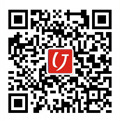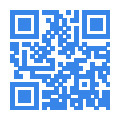
NEWS CENTER
The structure and working principle of thyristor
Release time:
2022-03-02 09:19
Thyristor is the abbreviation of thyristor, also known as silicon controlled rectifier (SCR), formerly referred to as thyristor. The thyristor can be turned on by a signal, but cannot be turned off, so it is called a semi-controlled device. The name thyristor often refers specifically to a basic type of thyristor—a common thyristor. But in a broad sense, thyristor also includes many derivative devices, such as bidirectional thyristor (TRIAC), fast thyristor (FST), reverse conducting thyristor (RCT) and light-controlled thyristor (LTT), etc.
1. The structure of the thyristor
At present, the commonly used shape structures of high-power thyristors are bolt type and plate type. It has a four-layer structure with three PN junctions. Its shape, structure and graphic symbols are shown in the figure.
The inside of the thyristor is a PNPN four-layer semiconductor structure, which are named as P1, N1, P2, and N2 regions. The two electrodes drawn from the outermost P layer and the N layer are the anode A and the cathode K, respectively, and the electrode drawn from the middle P2 layer is the gate G (also called the control electrode). The four regions form three PN junctions, J1, J2, and J3. Therefore, the thyristor can be equivalent to three PN junctions in series, as shown in Figure 8-2, the international common name of the thyristor is Thyristor, abbreviated as VT.
Thyristor is a power electronic device, which will generate heat due to loss during operation, so a radiator must be installed. For the bolt type package, the bolt is usually the anode, which is made into a bolt shape to be tightly connected with the radiator and easy to install. It is tightened on the aluminum radiator through the anode (bolt) for natural cooling; the flat thyristor is composed of two Two mutually insulated heat sinks clamp the thyristors and are cooled by cold air.
The flat plate type has good heat dissipation effect on both sides, and the thyristor with a rated current greater than 200 A adopts a flat plate structure. In addition, it can also be cooled by cooling methods such as water cooling and oil cooling.
Second, the working principle of thyristor
A simple experiment is done through the circuit shown in the figure to illustrate the working principle of the thyristor. The main circuit of the thyristor is composed of the power supply Us, the incandescent lamp, the anode and the cathode of the thyristor. Power supply Uc, switch S, thyristor gate and cathode form a control circuit, also called a trigger circuit.
When the anode A of the thyristor is connected to the positive terminal of the power supply Us. The cathode K is connected to the negative end of the power supply through the incandescent lamp, and the thyristor is subjected to a forward voltage at this time. When the switch S in the control circuit is turned off, the incandescent lamp does not light up, indicating that the thyristor is not conducting.
When the anode and cathode of the thyristor are subjected to a forward voltage, the switch S in the control circuit is closed, so that the control electrode is also applied with a forward voltage (the voltage between the control electrode and the cathode). At this time, the incandescent light is on, indicating that the thyristor is turned on.
When the thyristor is turned on, remove the voltage on the control pole (the Kaimei S is about to be disconnected), and the incandescent lamp is still on. It shows that once the thyristor is turned on, the control pole loses its control function.
When a reverse voltage is applied between the anode and the cathode of the thyristor, no matter whether the control electrode is applied with voltage or not, the light does not light up, and the thyristor is turned off at this time. If a reverse voltage is applied to the control electrode, no matter whether the main circuit of the thyristor is applied with a forward voltage or a reverse voltage, the thyristor will not conduct.
The following conclusions are drawn from the above experimental results.
(1) To make the thyristor turn on, two conditions must be met at the same time:
① A forward voltage is applied between the anode A and the cathode K of the thyristor, and ② a suitable forward voltage and current are also added between the gate G and the cathode K of the thyristor.
(2) Once the thyristor is turned on, the gate will lose control, so the thyristor is a half-controlled device.
(3) In order to turn off the thyristor, the anode A current must be reduced to zero or below a certain value. This can be done by reducing the anode A voltage to zero or applying a reverse voltage to the anode.
2022
02-24
2022
02-24
Jinli Electric Co., Ltd.
Sincere cooperation, mutual benefit and win-win!

WeChat public
account

Mobile website
Jinzhou Jinli Electric Co., Ltd.
Copyright © 2022 Jinzhou Jinli Electric Co., Ltd. All Rights Reserved
Powered by:300.cn jinzhou SEO Business license
